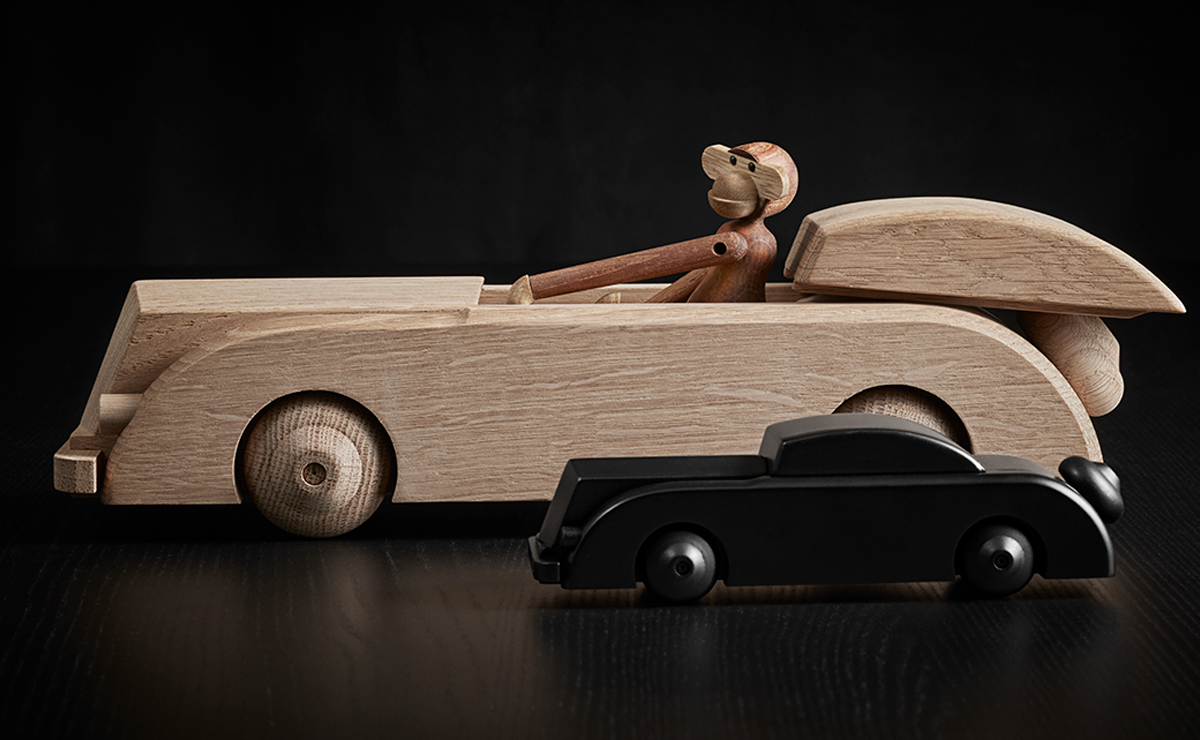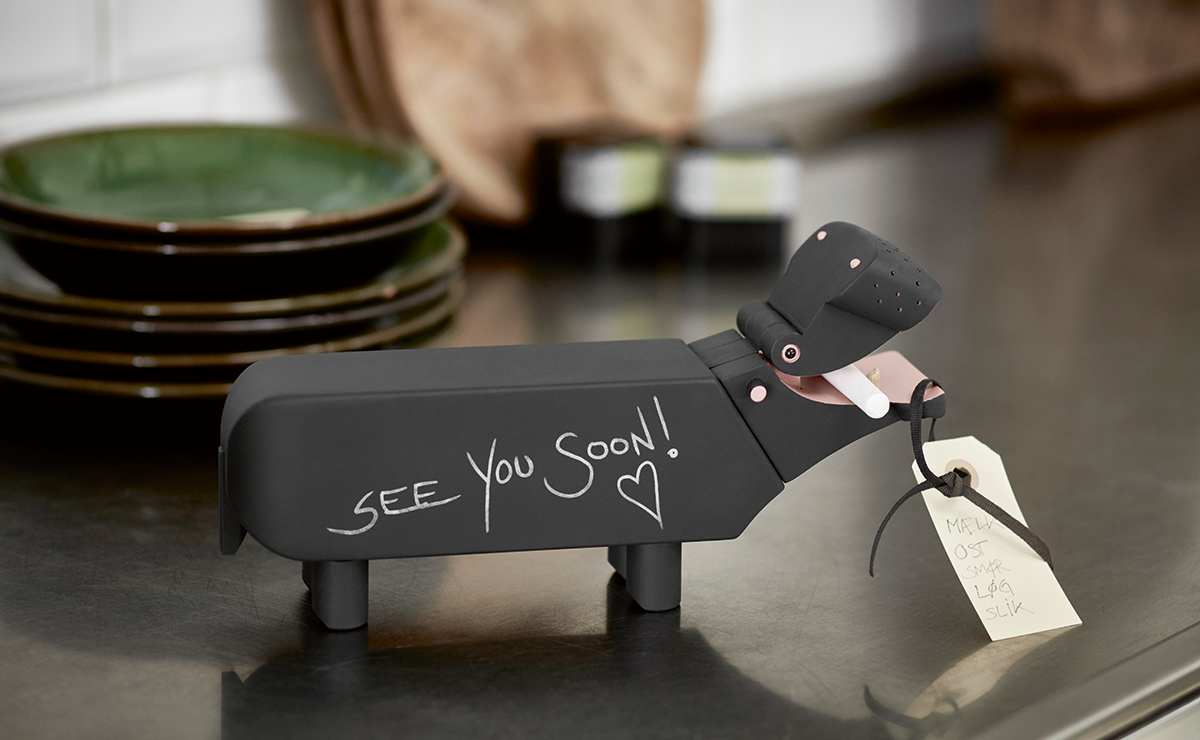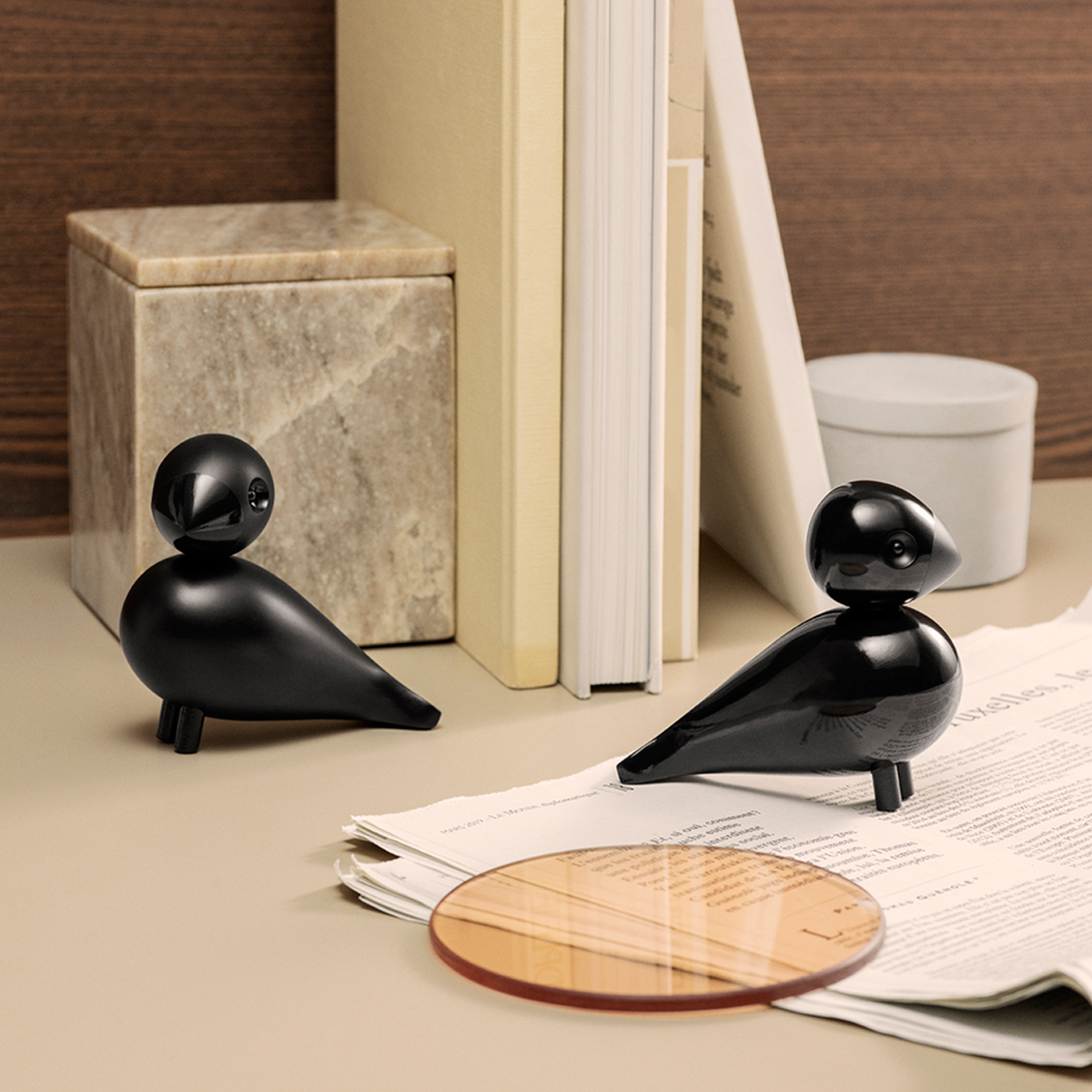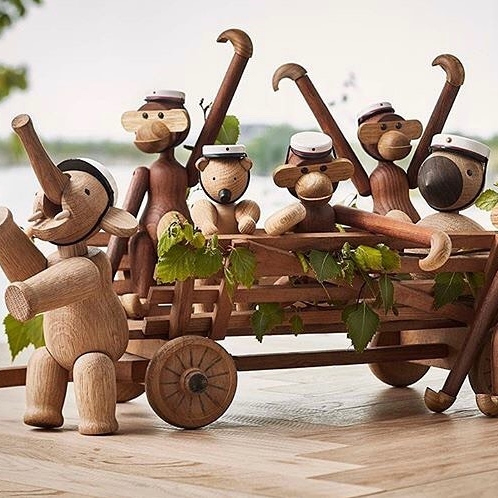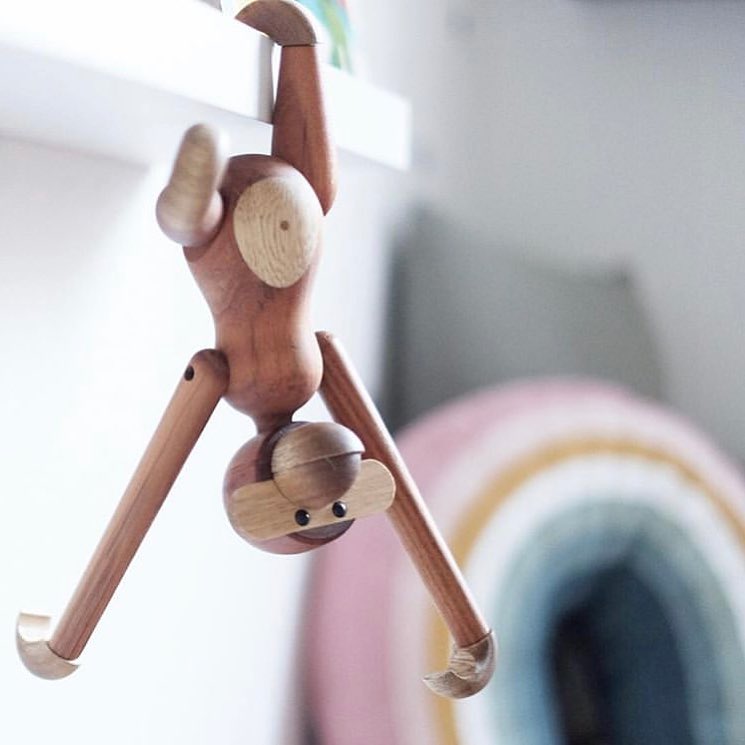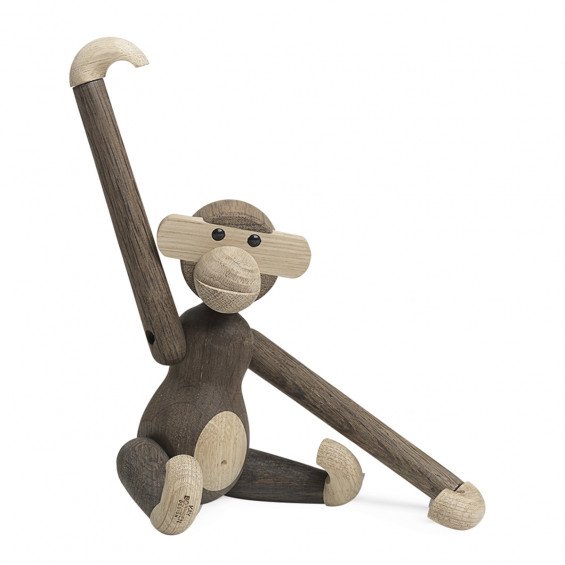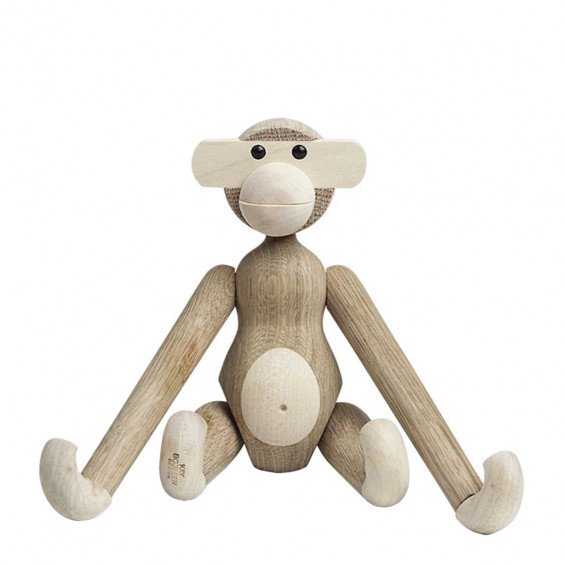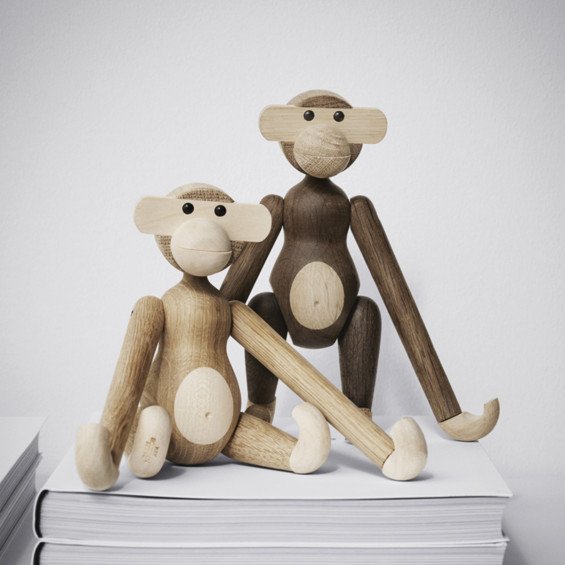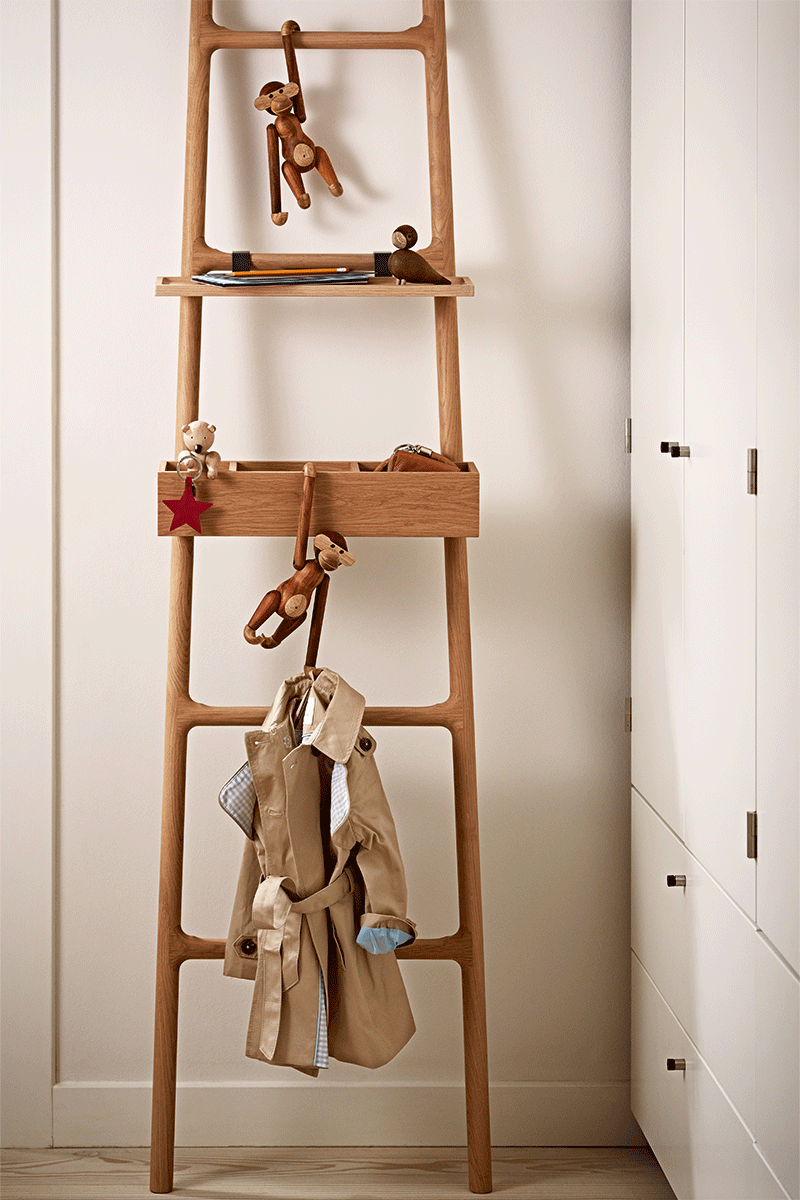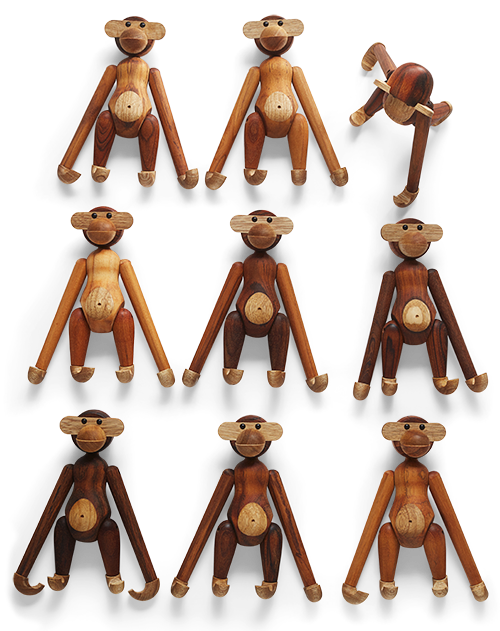| No products |
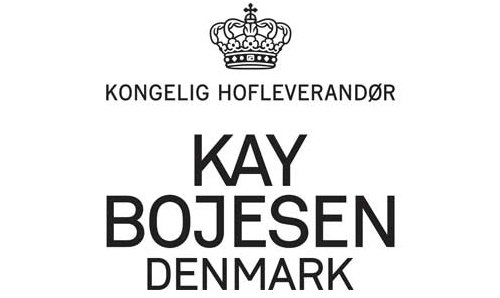
Kay Bojesen is regarded as one of Denmark's biggest designer names and his designs are among the most popular in Danish design.
KAY BOJESEN (1886 – 1958)
Celebrating the child within Kay Bojesen
Silversmith and designer Kay Bojesen had a very special talent. He was able to bring wood to life, and he became world-famous for creating wooden toys that had soul and an impish sense of humour. With more than 2000 pieces to his name, Kay Bojesen was one of Denmark's most prolific artisans in the 20th century. He is best known for his playful and cheerful monkeys, royal life guards and other wooden toys, but his wide-ranging production also includes jewellery, cutlery, teapots and silver goblets.
Kay Bojesen graduated as a silversmith in 1910 after completing his apprenticeship with silversmith Georg Jensen. As one of the first Danish artisans to do so, he embraced functionalism. He was among the pioneers who organised Den Permanente association – a cooperative of artists that included a shop and exhibition space which over the decades came to represent the best in Danish and Scandinavian design.1919 became the start of a new era for Kay Bojesen. He got married and his son Otto was born. This sparked Kay Bojesen's imagination and fascination for children, toys and wood and brought back memories of his own childhood when his father (the publisher Ernst Bojesen – the publisher of the Danish satirical annual Blæksprutten (The Octopus)) cut wooden figures for him and encouraged his children to be creative, imaginative and playful.
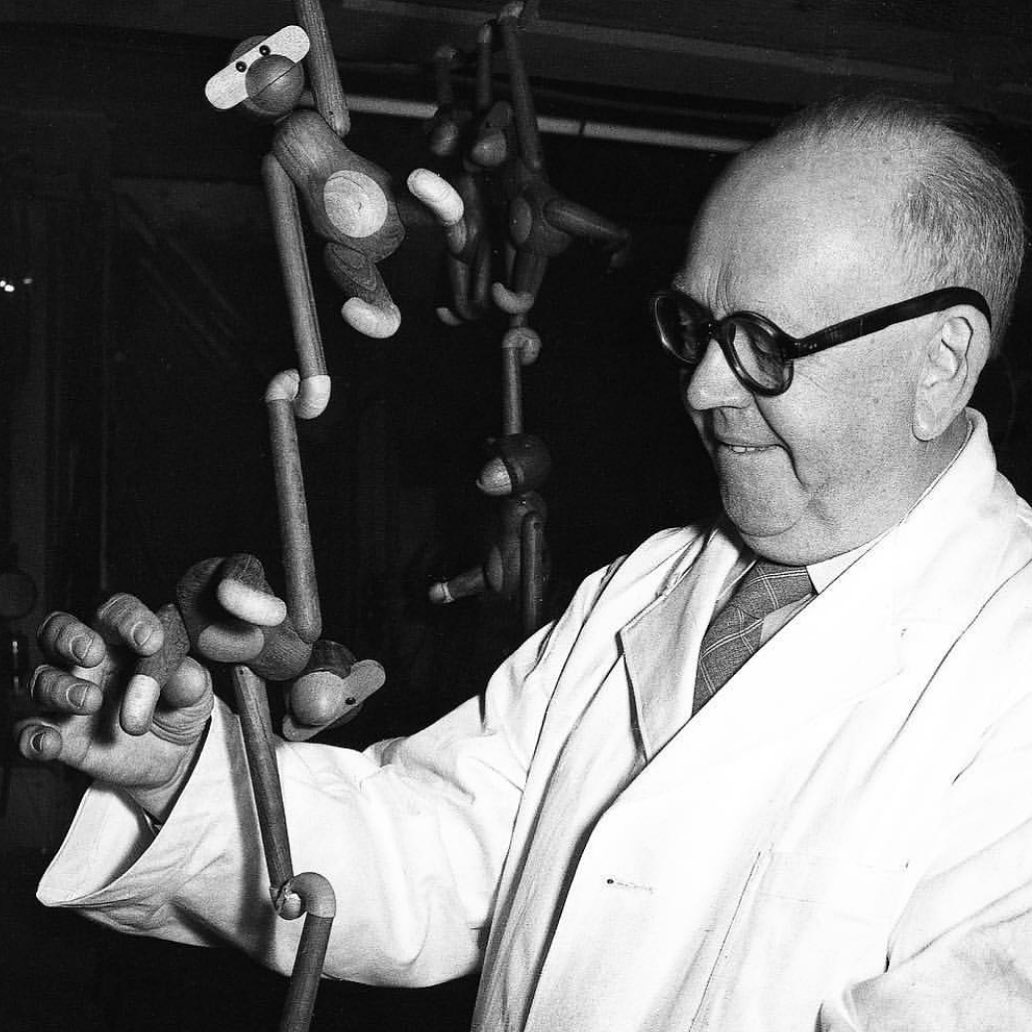
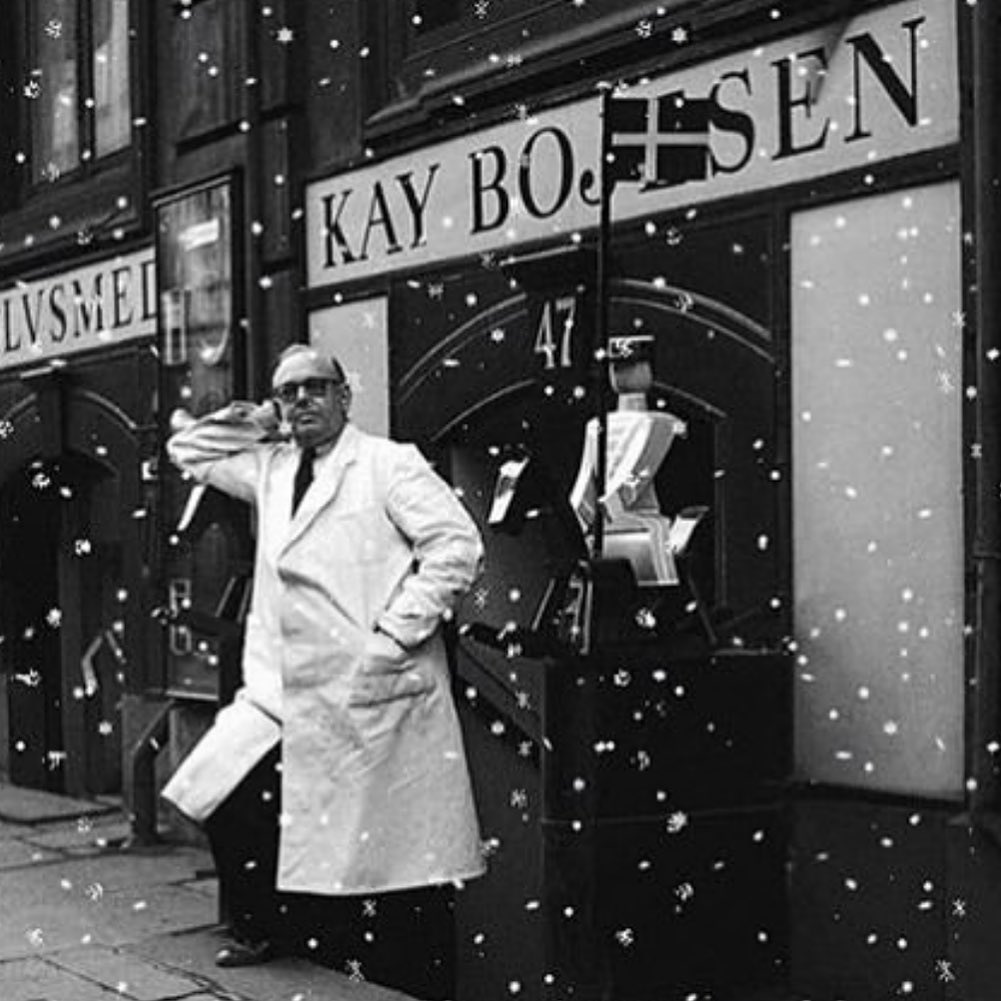
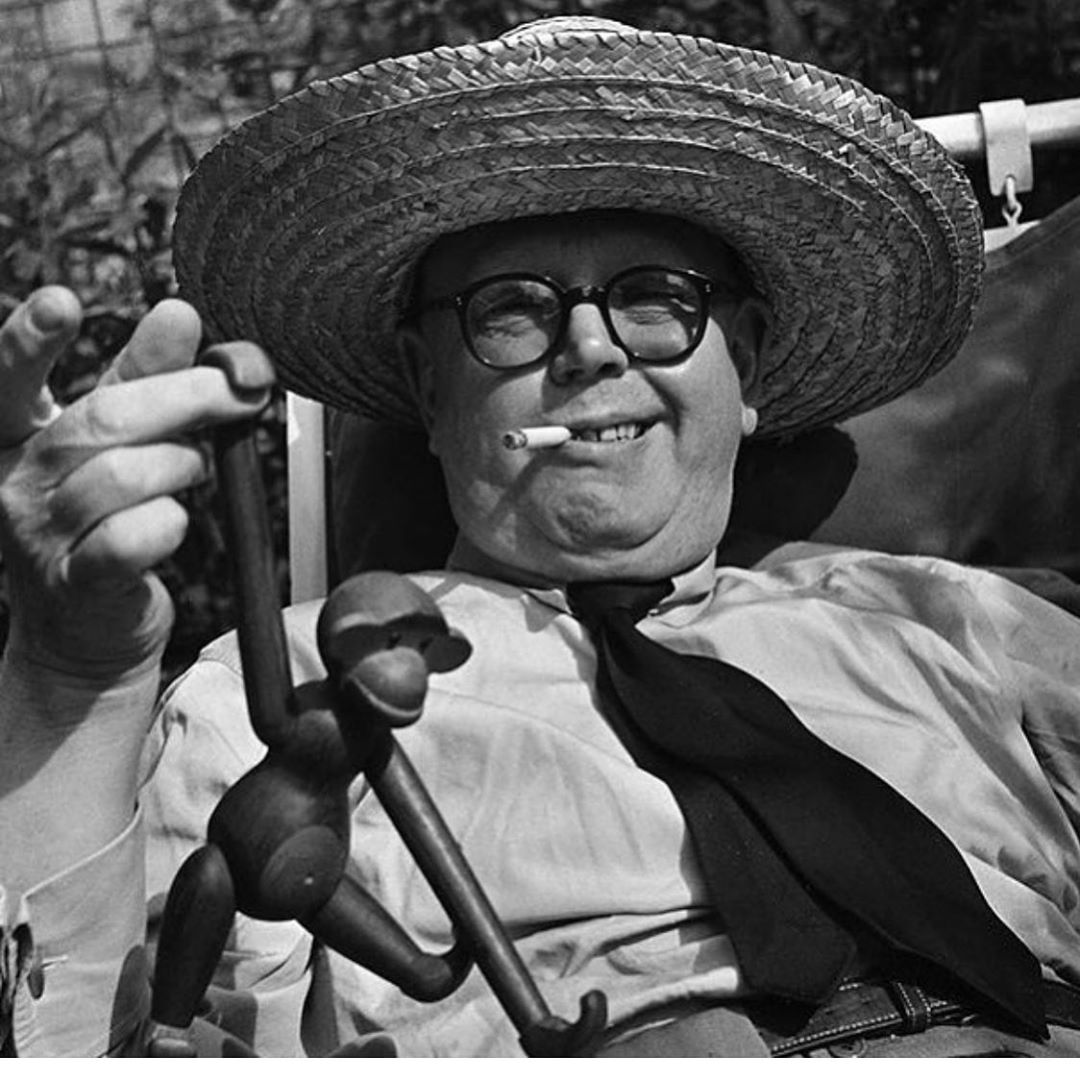
In the 1930s, Kay Bojesen started in earnest to indulge his interest in wood. He created a range of wooden toys that all lived up to his ideal that design should be round, soft and have a good feel to it.
His idea was not to create lifelike copies of real animals or to be too sophisticated or focus too much on detail, but instead to create imaginative toys in designs based on a child's own world where ‘lines need to smile’. The wooden toys had to be simple, solid and inspire children to play.
With this basic philosophy in mind, Kay Bojesen created his beloved wooden toys that appeal to the child within us all.
For generations, Kay Bojesen was seen as the high spirits of Danish industrial design. Today, Kay Bojesen is regarded as one of Denmark's biggest designer names and his designs are among the most popular in Danish design.
DISCOVER OUR COLLECTION BY KAY BOJESEN
MONKEY MAKING OF VIDEO
Kay Bojesen’s Monkey consists of 31 parts and is made of limba wood and sustainable teak.
When we work with beloved design classics, we maintain a design heritage that demands integrity throughout. That means we focus intently on using sustainable wood material in the production of Monkey. Monkey is made from plantation teak – which is a sustainable alternative to teak from natural forests. This is how we ensure a responsible approach to forestry, as well as better living conditions for local communities around plantations throughout the world. When recently felled, plantation teak’s color varies from wax-yellow to light grey-green, sometimes also speckled with dark spots and striping. Our supplier focuses on making different color variations as similar as possible. A special attempt is made to match the arms and legs with the color of the Monkey’s body, while the head will often appear darker than the rest of the Monkey. When working with plantation teak, variations in color are inevitable, and these variations are therefore not a quality parameter. They are a consequence of the choices we’ve made concerning sustainability and integrity in our production of the Kay Bojesen Monkey. Instead, the quality parameters of the wood include that the surface should be free of splinters, scars or cracks, while only healthy knots are acceptable. Glue remains must never be visible. The limba wood used in Monkey is imported from Africa and meets EUTR regulations, which ensure legal felling in the country of origin. Over time, exposure to light and air will turn any color nuances in the teak into a more even, golden-brown and warm tone. Every single Kay Bojesen Monkey will, however, maintain its own, entirely unique personality.
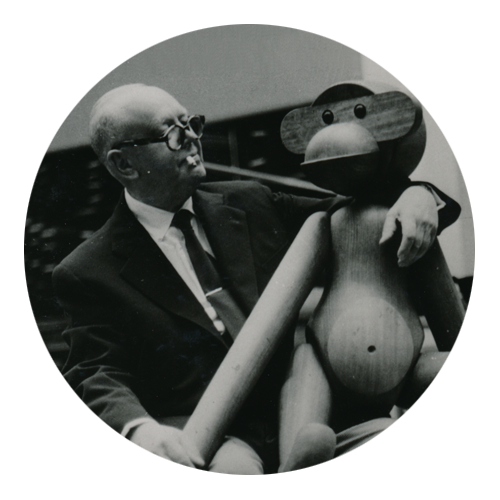
Kay Bojesen dies at the age of 72 (on 28 August 1958). His widow Erna Bojesen continues the business until her death in 1986.
The family runs the shop for another few years. In 1991, the rights to the wooden toys, the life guards and the Grand Prix steel cutlery are sold to Erik Rosendahl. In 2011, the rights to the Grand Prix cutlery are transferred to Sus Bojesen, Kay Bojesen's granddaughter.


